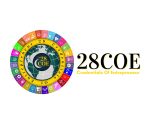In an era where technology advances at breakneck speed, the rights and well-being of our children are more crucial than ever. As we forge ahead into this digital age, it is imperative to confront the unique challenges and opportunities that technology presents to children’s rights. Our collective actions today will shape the future of the next generation, making it essential for us to act with urgency and purpose.
The Digital Landscape: Opportunities and Risks
Technology has the potential to revolutionize education, healthcare, and communication, offering unprecedented opportunities for children worldwide. From interactive learning tools to telemedicine, technology can bridge gaps and enhance the quality of life. Yet, with these advancements come significant risks. The digital divide continues to widen, leaving marginalized children further behind. Additionally, issues such as online privacy, cyberbullying, and exposure to inappropriate content pose serious threats to young users.
The Imperative of Digital Literacy and Safety
As technology becomes increasingly integrated into daily life, it is vital that children are equipped with the knowledge and skills to navigate this landscape safely. Digital literacy should be a fundamental part of education, teaching children not only how to use technology but also how to understand its implications. This includes understanding the importance of online privacy, recognizing the signs of cyberbullying, and knowing how to seek help if needed.
We must advocate for comprehensive digital safety programs in schools and communities. These programs should be designed to empower children and their families, providing them with the tools to protect themselves in the digital world. Additionally, parents and guardians must be educated on how to support their children in this realm, ensuring that they are informed and proactive.
Ensuring Equity in Access
One of the most pressing issues is the digital divide, which affects access to technology and the internet. This disparity disproportionately impacts children from low-income families and rural areas, further entrenching social inequalities. To address this, it is crucial that we push for policies and initiatives aimed at providing equitable access to technology and the internet for all children. Public and private sectors must collaborate to create affordable solutions and infrastructure that ensure every child has the opportunity to benefit from digital advancements.
Protecting Privacy and Security
Children’s privacy online is a growing concern, with many young users unaware of the risks associated with sharing personal information. Stronger regulations and safeguards are needed to protect children’s data and ensure that technology companies adhere to high standards of privacy and security. Parents should also be proactive in monitoring their children’s online activities and educating them about the importance of safeguarding their personal information.
Advocacy and Action
The stakes are high, and the time to act is now. We must advocate for policies that protect children’s rights in the digital age, support digital literacy programs, and work to close the digital divide. This requires a concerted effort from governments, educators, technology companies, and communities. By working together, we can create a future where technology serves as a tool for empowerment rather than a source of harm.
Conclusion: A Call to Action
The future we shape for our children will be defined by how we address the intersection of children’s rights and technology. It is our responsibility to ensure that as we advance technologically, we do so with a keen awareness of the impact on young lives. Let us commit to advocating for policies that protect and empower, educating our children and their families, and working tirelessly to bridge gaps and safeguard privacy. The actions we take today will determine the kind of world our children inherit tomorrow. Let us rise to this challenge with urgency and dedication, shaping a future where technology enhances and uplifts every child’s potential.

